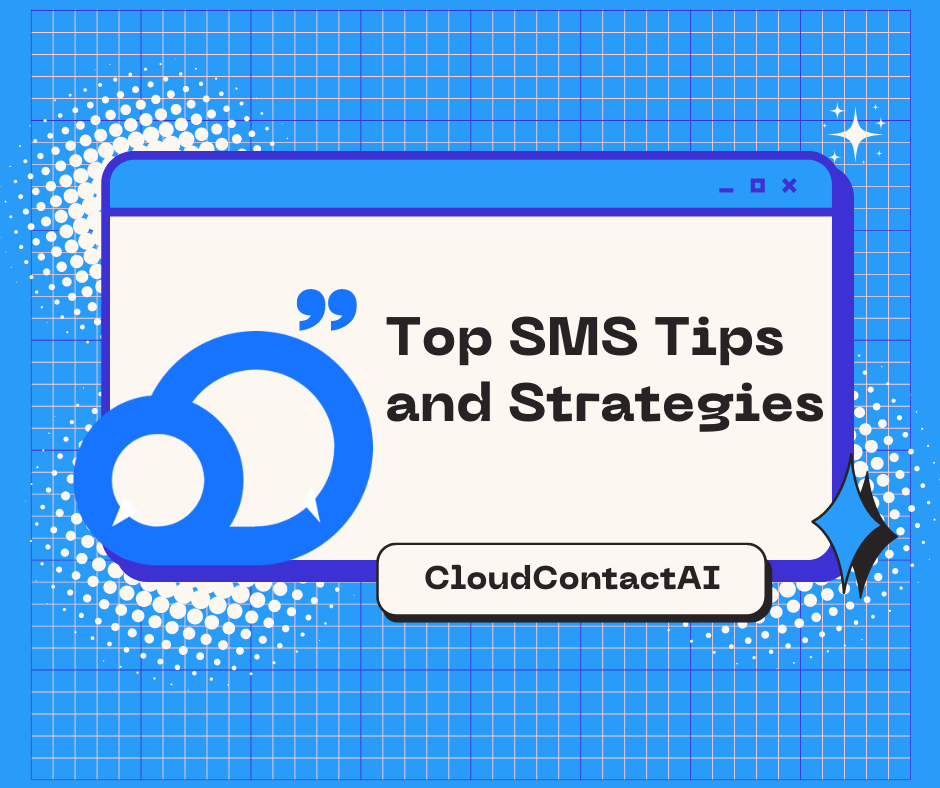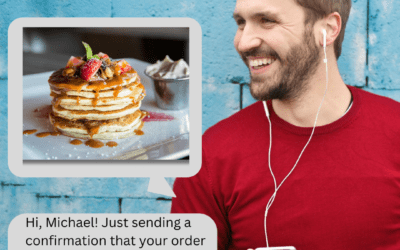What is SMS Marketing?
As a business owner it’s critical to always be looking for new and effective ways to reach your audience. While email marketing and social media can be effective, there’s another tool you might be overlooking: text message marketing.
SMS, also known as text messaging, is a popular digital marketing strategy that involves sending promotional messages, updates, and other information directly to customers’ phones. This approach boasts an impressive open rate of 98%, with most messages being read within three minutes of delivery, making it an effective and efficient way for businesses to communicate with both existing and potential customers.
Moreover, SMS marketing is a low-cost yet high-impact method for businesses to connect with their customers and drive sales. It allows for personalization based on factors such as a customer’s location, interests, and purchase history. As a result, businesses can establish direct and personal communication channels with their customers, building lasting relationships. Overall, SMS marketing is a valuable tool for businesses to increase customer engagement, loyalty, and sales, while delivering a positive user experience
How can I create a text message marketing strategy?
An SMS marketing strategy is a well-thought-out plan that directs your actions and decisions when it comes to sending text messages for marketing purposes. It encompasses various aspects such as selecting the appropriate type of text number that aligns with your goals, considering tactics to attract new subscribers, and creating and executing SMS marketing campaigns that contribute to achieving your objectives. In essence, it serves as a guiding light that ensures your SMS marketing efforts are cohesive, effective, and aligned with your overall marketing strategy.
Analyzing SMS data is crucial for optimizing marketing campaigns because it allows businesses to evaluate the effectiveness of their strategies and campaigns. By examining SMS data, companies can gain insights into customer engagement, response rates, and overall performance. This analysis helps identify areas for improvement and provides valuable information for enhancing future campaigns. Optimizing SMS data can lead to more targeted and successful marketing efforts, resulting in increased customer engagement and higher conversion rates.
How can businesses effectively handle customer replies to SMS messages?
Businesses should have a plan in place to manage customer replies to SMS messages. It is important not to leave customers feeling ignored. Setting up an auto-reply instructing customers on how to get in touch or having a responsive customer service team to address incoming questions promptly is essential.
How can businesses manage the frequency of SMS messages?
Businesses should be mindful of the frequency of SMS messages. It is recommended to be more conservative compared to email marketing due to the personal nature of cell phones and texting. Finding the right balance is crucial to avoid overwhelming customers or being too infrequent to achieve marketing goals.
How can businesses maintain brand consistency in SMS marketing?
Businesses should not stray from their established brand voice in SMS marketing. It is crucial to use appropriate language, maintain consistent spelling, and incorporate visuals that align with the brand identity.
How can businesses personalize SMS messages to boost engagement?
To boost engagement, businesses can personalize SMS messages by addressing customers by name, adding emojis, and ensuring the messages remain relevant to the customer’s interests or previous interactions.
How can businesses optimize message content within the character limit?
Businesses can optimize message content by keeping messages short and utilizing the 160-character limit effectively. It is important to be concise and straight to the point while conveying the necessary information.
How can businesses effectively manage opt-out requests?
Businesses should always honor opt-out decisions from customers. If a customer replies with STOP, businesses should make sure not to text them anymore. Having a system in place to handle opt-out requests promptly is essential.
How can businesses ensure legal compliance in SMS marketing?
To ensure legal compliance in SMS marketing, businesses should not text customers without an explicit opt-in. It is required by law to obtain opt-ins from customers before sending text messages.
Should You Use SMS Marketing? Here are Some Benefits.
There are many benefits to using SMS marketing as part of your overall marketing strategy. Here are just a few:
High open rates: As mentioned earlier, SMS messages have an open rate of 98%. That means that your message is almost guaranteed to be seen by your audience.
Fast delivery: SMS messages are delivered instantly, so you can reach your audience in real-time.
High engagement: Text messages are personal and direct, which makes them highly engaging for customers. This can lead to higher click-through rates and conversions.
Cost-effective: SMS marketing is relatively inexpensive compared to other marketing
Accessible: Most people these days are using their phones all the time. Take advantage of this by utilizing the power of text messages!
Try Our Premium SMS Platform for Free!
Ready to take advantage of the many benefits that SMS (text messaging) has to offer?
Sign up for our 14-day free trial today to start boosting engagement, increasing open-rates, and making sales. Do more with CloudContactAI.
Top Tips to Optimize Your SMS Campaign
When looking to optimize outreach and maximize the impact of each text message in SMS marketing campaigns, it is essential to treat customers and supporters like valued guests. Some best practices to achieve this include personalizing messages, providing valuable information or offers, keeping messages concise and clear, using strong calls to action, monitoring and analyzing campaign data, and consistently refining your SMS marketing strategy based on insights and feedback.
Build a quality contact list
The first step in launching an SMS campaign is to build your SMS list. This involves getting customers to opt-in to receive text messages from your business. You can do this by adding an opt-in form to your website, promoting your SMS campaign on social media, or even collecting phone numbers in-store.
Segment your audience
Just like with email marketing, it’s important to segment your SMS list based on factors like demographics, purchase history, and interests. This will allow you to send targeted messages that are more likely to resonate with your audience. Segmenting your list into existing and potential customers is often a good place to start.
Keep your messages short and sweet
Remember, SMS messages are limited to 160 characters, so it’s important to keep your messages short and to the point. Consolidate the information in your text message and include a clear call-to-action
Personalize your messages
Personalization is key when it comes to SMS marketing. Use your customer’s name and include personalized product recommendations or promotions based on their purchase history.
Businesses should avoid sending non-personalized messages in SMS marketing because doing so can make customers feel like the messages are intrusive and generic. When messages lack personalization, customers may not feel like they are being addressed as individuals, and the messages may not be tailored to their specific interests. This impersonal approach can lead to a negative perception of the business and its marketing efforts, potentially resulting in reduced engagement and effectiveness of the SMS marketing campaigns.
Test and optimize
As with any marketing channel, it’s important to test and optimize your SMS campaigns. It may take quite a few trial runs to get the perfect campaign, but A/B testing is a must for any marketing strategy.
Call to action
Use a strong call-to-action: A clear and compelling call-to-action is essential for driving conversions. Make sure your message includes a strong call-to-action that encourages customers to take advantage of a discount, visit your site, or sign up for some sort of service that you offer.
Keep track of your analytics
Keep track of your SMS marketing results and adjust your strategy as needed. By using an SMS platform that tracks data such as open-rates, click through, and conversions, you can save yourself a few steps.
Don’t spam your recipients
This one goes without saying, but it’s important. While it’s crucial to stay in your customers’ minds, it’s more important to not bombard them with so many messages that they unsubscribe. As with life, moderation is key.
How does the frequency of my text messages impact my SMS marketing goals?
The frequency of your text messages plays a crucial role in determining the impact on your SMS marketing goals. It’s important to find the right balance, as both excessive and inadequate message frequency can have adverse effects.
Sending too many messages runs the risk of overwhelming your customers, leading them to unsubscribe or ignore your messages altogether. This can hinder your SMS marketing goals by reducing your audience and diminishing the effectiveness of your campaigns. The personal nature of cell phones and texting means that users are more likely to find excessive messaging intrusive and disruptive.
On the other hand, if you send too few messages, you may not be able to fully achieve your SMS marketing goals. Inadequate frequency can result in missed opportunities to engage with your audience, communicate important updates, or deliver timely promotions. By being too conservative in your messaging approach, you might not be effectively leveraging the potential of SMS marketing to drive customer actions and conversions.
Considering these factors, it is generally recommended to be more conservative with text message frequency compared to email marketing. Recognizing the personal nature of cell phones and texting, it is important to strike a balance that respects your customers’ preferences while still effectively conveying your marketing messages. By finding the right frequency, you can optimize your SMS marketing efforts and ensure that they align with your goals.
Should I send text messages to customers without their explicit opt-in?
In order to provide a comprehensive answer to the question “Should I send text messages to customers without their explicit opt-in?”, it is advised to consider the following points:
Text messages should not be sent to customers without their explicit opt-in. Prior consent from customers is crucial before initiating any text message communication. Respecting customers’ consent is both ethical and legally required.
Opt-ins serve as a necessary prerequisite. It is important to first obtain opt-ins from customers, meaning they have explicitly given their permission to receive text messages. This ensures that customers have willingly expressed their interest in engaging with your messages.
Legal compliance is imperative. Sending text messages without a customer’s opt-in not only violates ethical standards, but it can also lead to legal consequences. Various laws and regulations, such as the Telephone Consumer Protection Act (TCPA) in the United States, require obtaining explicit consent before sending commercial text messages.
Prioritize customer preferences and privacy. Respecting customers’ choices and privacy is crucial for maintaining a positive relationship. By obtaining opt-ins, you empower customers to control their communication preferences and demonstrate a commitment to their privacy.
Building trust and engagement. By obtaining explicit opt-ins, you establish a foundation of trust with customers. This trust can lead to better engagement and a more positive interaction between your business and its customers.
In summary, it is strongly advised not to send text messages to customers without their explicit opt-in. Obtaining opt-ins ensures legal compliance, respects customers’ privacy preferences, and can lead to building trust and better engagement.
What are SMS workflows and how do you build them?
Choosing the right SMS marketing software can significantly impact the effectiveness and scalability of your SMS marketing strategy. To ensure you make an informed decision, follow these steps:
1. Evaluate your needs: Consider the specific features you require for your SMS marketing campaign. For instance, do you need automated messages or opt-in keywords? Make a list of the essential features that your software must-have.
2. Research the available options: There are numerous SMS marketing platforms on the market. Take the time to explore the various options and compare their features, pricing, and user reviews. Look for platforms that align with your needs and offer the functionalities you identified in step one.
3. Consider scalability and sustainability: While manually sending individual texts from your phone may seem manageable initially, it is not a sustainable approach as you scale your marketing efforts. Look for a software solution that allows for easy scaling and can handle a growing number of contacts.
4. Set a budget: Determine your budget for SMS marketing software. Some platforms offer different pricing tiers based on the number of credits or messages you need each month. Consider how many credits you will require as well as any additional costs associated with specific features.
5. Assess usability: The usability of the platform is essential for efficiency. Look for user-friendly interfaces and intuitive workflows that make it easy for you to navigate and operate the software. A complex or overly technical platform may cause unnecessary complications in executing your SMS marketing campaigns.
6. Obtain demos or trials: If possible, request demos or take advantage of free trials offered by the software providers. This will allow you to experience the platform firsthand, test its features, and assess whether it meets your requirements.
7. Seek recommendations: Ask for recommendations from industry professionals or colleagues who have experience with SMS marketing software. Their insights can provide valuable guidance in making your decision.
SMS workflows are a powerful tool that allows you to create automated sequences of text messages based on specific events or conditions. By setting up predefined message sequences, you can save time and effort by eliminating manual messaging tasks.
To build an SMS workflow, you first need to map out your messaging series. Consider the following questions:
1. What content should SMS subscribers receive?
Determine the type of messages that will be relevant and valuable to your audience. This could include exclusive offers, important updates, educational content, or personalized recommendations.
2. When should messages be sent?
Think about the timing that would be most effective for each message in your workflow. For example, you may want to send a welcome message immediately after someone subscribes, or follow up with an abandoned cart reminder a few hours after the cart was abandoned.
3. How frequently should contacts receive messages?
Strike a balance between staying engaged with your subscribers and not overwhelming them with too many messages. Consider the frequency that aligns with your goals and the preferences of your audience.
Once you have clear answers to these questions, you can start building your SMS workflow. Most messaging platforms provide built-in tools and functionalities to create and manage workflows easily. Here are the essential steps:
1. Define triggers:
Identify the specific events or conditions that will trigger your messages. This could be actions taken by subscribers, such as signing up, making a purchase, or abandoning a cart. Triggers ensure that the right message is sent at the right time.
2. Craft your messages:
Develop the content for each message in your workflow. Ensure that your messages are concise, engaging, and aligned with your overall messaging strategy. Personalization and relevance are key factors in maximizing the effectiveness of your SMS workflow.
3. Determine the sequence:
Arrange the messages in the desired order, considering the logical progression or the specific goals of your workflow. For example, a welcome series may consist of an introductory message, followed by additional informative messages over the next few days.
4. Set timing and delays:
Configure the timing for each message, keeping in mind the goals and preferences of your audience. Also, consider adding delays between messages to provide some breathing space and avoid overwhelming your subscribers.
5. Test and optimize:
Before launching your SMS workflow, conduct tests to ensure proper functionality and optimal user experience. Monitor the performance of your workflow over time and make adjustments as needed to improve engagement and conversion rates.
By building SMS workflows, you can automate your messaging process, deliver personalized experiences, nurture leads, and guide your subscribers through their customer journey effectively. It not only saves time and effort but also ensures consistent and timely communication with your audience.
What are the different types of SMS campaigns to consider?
Determining the types of SMS campaigns to send involves considering your specific objectives for your marketing efforts. Firstly, it is crucial to identify what you aim to achieve through your SMS campaigns. Are you seeking to drive sales, increase event attendance, or enhance brand awareness? Once you have clearly defined your goals, you can tailor your campaign strategies accordingly. For instance, if your objective is to attract buyers, you may choose to send out discounts and promotional offers. On the other hand, if boosting event attendance is your main focus, sending invitations to planned events can be effective. Alternatively, sharing valuable content directly from your brand is another approach to engage your audience. Ultimately, your chosen campaign types should align with your marketing objectives and the preferences of your target audience.
When planning an SMS marketing campaign, it is essential to consider your audience and campaign goals. Once you have defined these, you can determine the most suitable type of SMS campaign to achieve your desired results. Here are several types of SMS campaigns to consider:
1. Welcome Series: A welcome series is a sequence of messages sent to new subscribers introducing your brand, products, or services. It can help build a positive first impression and establish a strong relationship with your audience from the start.
2. Promotional Campaigns: Promotional campaigns involve sending SMS messages with exclusive offers, discounts, or promotions to encourage immediate action from your subscribers. This can help stimulate sales, increase brand awareness, and drive customer engagement.
3. Informational Messages: Informational messages provide valuable and relevant content to your subscribers. These can include tips, industry news, updates about your products or services, or educational resources. Such messages help establish your business as a reliable source of information and build trust with your audience.
4. Abandoned Cart Reminders: Abandoned cart reminders are designed to target customers who have added items to their online shopping carts but did not complete the purchase. By sending timely SMS reminders with personalized offers, you can effectively recover abandoned carts and drive conversions.
5. Feedback Solicitation: SMS campaigns can also serve the purpose of gathering feedback from your customers. You can send messages requesting reviews, ratings, or opinions about your products, services, or overall customer experience. This feedback is valuable for enhancing your offerings and improving customer satisfaction.
SMS marketing can be effectively utilized to request customer feedback and reviews by leveraging the direct and personalized communication channel it provides. Through SMS texts, businesses can reach out to existing customers and ask for their opinions or request testimonials for platforms like Yelp or Google My Business.
Closing Thoughts
SMS marketing is a highly effective and affordable way for businesses to reach their target audience and boost their return on investment. By using text messages to send promotions, updates, and other valuable information, businesses can reach customers where they are most likely to see it – on their phones. This method of communication has proven to be successful due to several key reasons.
Firstly, SMS campaigns benefit from an impressive open rate of 98%. This means that almost all text messages sent to customers are actually read, ensuring that businesses have a direct line of communication with their audience. This high open rate is significantly higher than other forms of communication, such as email, making SMS marketing a reliable and effective means of reaching customers.
Furthermore, SMS marketing allows businesses to engage with customers on their preferred communication channel. In fact, studies indicate that 71% of consumers have willingly opted in to receive text messages from businesses. This demonstrates that customers actively choose to engage with businesses through text messaging, highlighting their interest and receptiveness to this form of communication.
SMS marketing is an excellent complement to other marketing strategies such as email and social media. By incorporating SMS into a multi-channel marketing approach, businesses can ensure they are reaching customers in a variety of ways and providing a consistent message across all channels. SMS texts are the perfect way to announce a new product or service and push your customers to your social channel to see it. With its high open rates, low cost, and ability to drive sales and engagement, SMS marketing should be an essential component of any business’s marketing strategy.
In today’s mobile-centric world, SMS marketing has become a critical tool for businesses of all sizes. With its high open rates, low cost, and ability to drive sales and engagement, SMS marketing should be an essential component of any business’s marketing strategy. By following the tips and best practices outlined in this post, businesses can launch successful SMS campaigns that provide a positive user experience and drive long-term success.
What Industries Can Utilize SMS Marketing?

Automotive

Banking

Debt Collection

Gyms

Healthcare

Hospitality

Political Campaigns

Real Estate

Retail

Restaurants

Sports Facilities

Veterinarians
Not sure if you’re ready to revolutionize the way your business communicates? Sign up for our 14-day free trial!
What do you have to lose?





